Last Tuesday night, I watched my 4-year-old nephew fight sleep for what felt like hours. He was wired, asking for water, another hug, one more story. Then I pulled out “Goodnight Moon” – a book I honestly thought he’d outgrown – and something magical happened. By the third “goodnight,” his eyelids were drooping. That’s when it hit me: the right bedtime story isn’t just entertainment, it’s like a gentle sleep potion.
I’ve spent countless nights reading to kids, watching them fight sleep one minute and drift off peacefully the next. The difference? The right bedtime stories. After researching sleep patterns and testing dozens of books with families, I’ve discovered that certain stories possess almost magical qualities for helping children transition from daytime energy to nighttime calm.
A recent study found that half of American children aged 7 or younger read bedtime stories before sleep, making it the most common pre-bedtime activity. These stories work because they balance engagement with calming elements, featuring gentle pacing and reassuring endings that actually help kids fall asleep.
Look, here’s what I’ve learned: the stories that work understand kid psychology. Toddlers need simple, repetitive stuff they can follow along with. Older kids can handle more complex plots, but you still want that gentle ending that doesn’t leave them thinking about adventure when they should be thinking about sleep. Classic stories stick around because they combine learning with actual sleep-promoting qualities, while newer books tackle the stuff modern kids worry about.
I’ve also discovered that interactive elements keep children engaged while maintaining that peaceful vibe you need for sleep prep. Plus, I’ll share some insights on AI-powered story tools that can create personalized bedtime content – think of them as your personal bedtime story writer who never gets tired of creating tales about whatever your kid is currently obsessed with.
What Makes a Perfect Bedtime Story: The Real Deal
Picking effective bedtime stories isn’t rocket science, but there are definitely some things that work better than others. I’ve broken it down into six things that really matter: making sure it’s right for your kid’s age, the length and pace, whether it’s going to wind them up or calm them down, if they’ll actually learn something, the comfort of repetition, and those little interactive moments that keep them engaged without getting them hyped up.
According to Ipsos research, nearly half (46%) of American children aged 7 or younger read bedtime stories before sleep. I remember when my nephew started requesting the same three books every single night – initially frustrating, but I quickly realized this repetition was actually helping him feel secure and ready for sleep.
The perfect bedtime story isn’t just entertaining; it’s basically designed to shift kids from daytime excitement to nighttime calm. You want stories that engage without overstimulating, teach without overwhelming, and comfort without creating dependency. Understanding the fundamentals of how storytelling affects the brain can help parents choose more effective bedtime narratives.
|
Age Group |
How Long Should It Be |
Vocabulary Level |
How Long They’ll Actually Listen |
What They Want to Hear About |
|---|---|---|---|---|
|
2-3 years |
3-5 minutes |
50-100 words |
2-5 minutes |
Daily routines, stuff they recognize |
|
4-5 years |
5-8 minutes |
100-300 words |
5-10 minutes |
Simple problems to solve, gentle adventures |
|
6-8 years |
8-15 minutes |
300-600 words |
10-20 minutes |
Character growth, right and wrong |
Getting the Age Thing Right
Younger kids (ages 2-4) love simple stories with repetitive parts and endings they can predict. Their attention spans are short, so they need stories they can actually follow, with clear cause-and-effect and words they already know.
Older kids (ages 5-8) can handle more sophisticated plots, character development, and deeper themes. They’re ready for stories that make them think while still providing that emotional security they need for peaceful sleep.
My friend Sarah’s 3-year-old daughter Emma insisted on hearing “Goodnight Moon” every night for six months. At first, Sarah worried about the repetition, but then she noticed Emma would point to each illustration and whisper “goodnight” along with the story. This became their special thing, and Emma would fall asleep within minutes of the story ending. That familiar structure gave Emma the security she needed to transition peacefully to sleep.
Story Length and Pacing That Actually Works
Bedtime stories should fit comfortably within your established routine – usually 5-15 minutes depending on your kid’s age and how long they can actually pay attention. Stories that drag on risk getting children wound up when you’re trying to calm them down.
The pacing matters just as much as length. Look for stories that gradually decrease energy levels, moving from mild excitement or curiosity toward resolution and peace.
Emotional Tone That Helps Kids Sleep
The best bedtime stories create gentle emotional experiences. Skip the intense conflict, scary stuff, or overly exciting action scenes that might leave kids’ minds racing when lights go out.
Instead, look for stories with reassuring themes about safety, love, belonging, and the comfort of home. These emotional foundations help children feel secure enough to let go and drift into sleep.
Learning Without the Overwhelm
Good bedtime stories sneak in learning opportunities – vocabulary building, social skills, problem-solving strategies, or basic concepts. But the educational stuff should feel natural, not forced.
Stories that teach while they soothe create positive associations with learning, making bedtime both restful and enriching for developing minds.
Why Kids Want the Same Story Over and Over
Children often prefer hearing the same stories repeatedly, and there’s solid reasoning behind this. Repetition helps language development, builds confidence through predictability, and provides emotional comfort through familiarity.
Rather than constantly introducing new stories, consider building a rotation of favorites that you can cycle through regularly. My friend Lisa swears by reading the same three books on rotation. “I used to think I was being lazy,” she told me, “but then I realized my daughter wasn’t asking for variety – she wanted the comfort of knowing exactly what came next.”
Interactive Elements That Keep Things Calm
Stories with opportunities for gentle participation – sound effects, simple questions, or predictable responses – keep children engaged while preserving that peaceful bedtime atmosphere.
The key is choosing interactive elements that invite quiet participation rather than energetic responses that might disrupt the transition to sleep.
25 Stories That Actually Work: The Complete List
I’ve organized these 25 bedtime stories into six categories, each serving different needs and bedtime preferences. From timeless classics that have soothed generations to modern tales that get what contemporary kids worry about, these stories give parents plenty of options for creating meaningful, sleep-promoting bedtime experiences.
The Old-School Winners (There’s a Reason Grandma Read These Too)
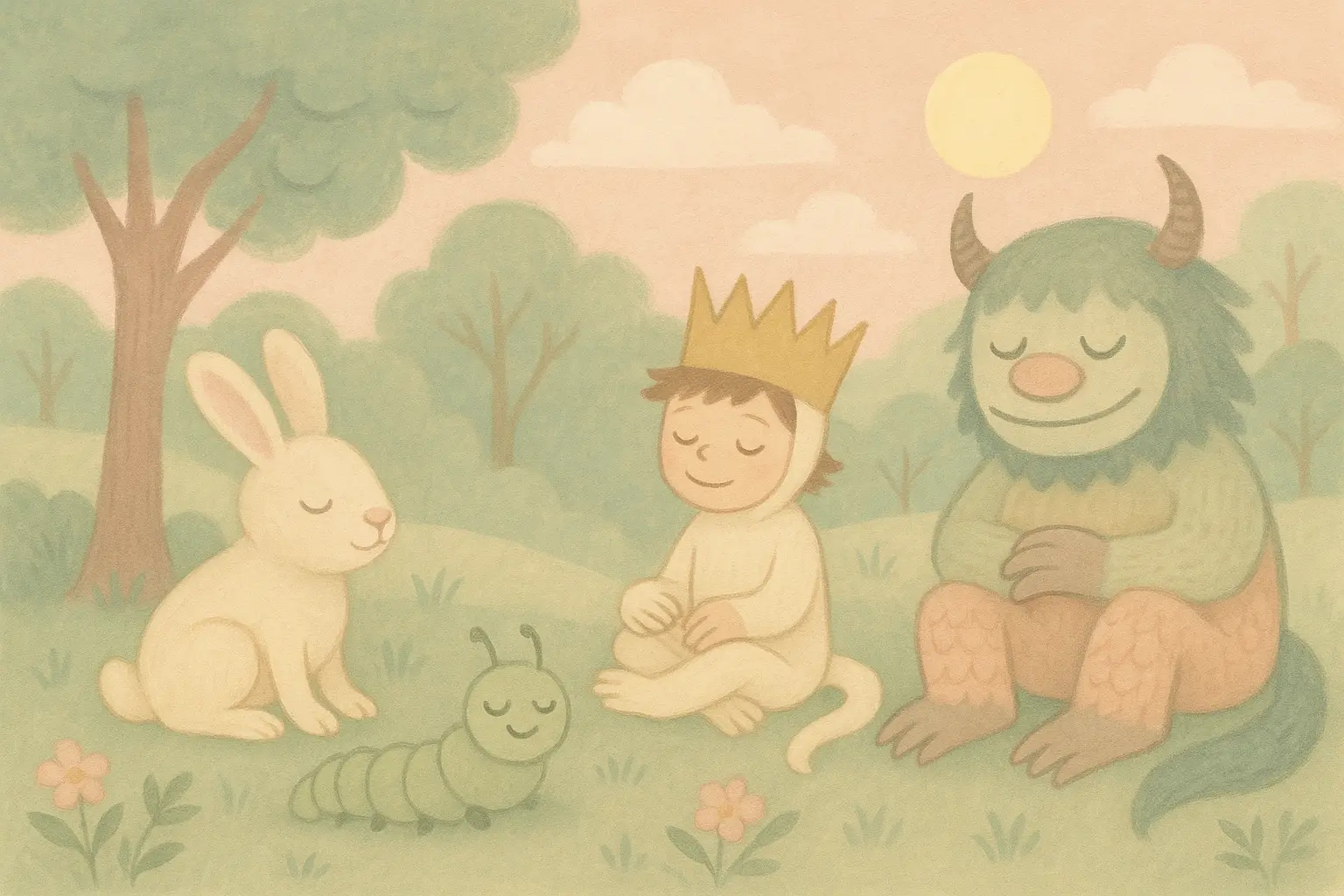
These five timeless stories have earned their place in bedtime routines through generations of successful use. Each combines familiar narrative structures with gentle pacing and reassuring themes that help children feel secure and ready for sleep, while their repetitive elements support language development and provide comforting predictability.
These classic tales represent excellent examples of folktale storytelling that have been refined over generations to create maximum bedtime effectiveness.
1. Goodnight Moon by Margaret Wise Brown
This is the bedtime story MVP. The bunny systematically says goodnight to everything in his room, and there’s something deeply calming about the ritual. The pictures gradually get darker, the text gets quieter, and kids naturally start winding down along with the story.
Why does “Goodnight Moon” work so well? It’s basically teaching your kid how to wind down. Kids start copying this – saying goodnight to their stuffed animals, their nightlight, even their closet door. It’s like the book gives them permission to slow down and notice the peaceful things around them.
2. The Very Hungry Caterpillar by Eric Carle
This is one of those books that sneaks education past your kid without them realizing it. My nephew learned his days of the week from this book, but all he cared about was the caterpillar munching through all that food. Plus, there’s something deeply satisfying about the transformation at the end – like everything worked out exactly as it should.
The caterpillar’s journey from hunger to satisfaction mirrors kids’ own growth, while the circular nature of transformation provides comfort and hope.
3. Where the Wild Things Are by Maurice Sendak
Max’s wild adventure lets kids safely explore big emotions and the power of imagination. The story validates feelings of anger and frustration while ultimately showing that home is where love and acceptance wait for you.
The best part? Max returns home to find his dinner still warm – that detail reinforces that no matter how wild your day gets, home is safe and parents are still there with unconditional love.
4. The Three Little Pigs (Classic Version)
This traditional tale teaches valuable lessons about hard work and planning ahead, with the satisfying ending where the hardworking pig succeeds. When told gently, focusing on problem-solving rather than fear, this story helps kids understand that preparation and effort lead to safety and success.
The three-part structure is comforting and predictable, and kids love the repetitive “not by the hair of my chinny-chin-chin” part.
5. Goldilocks and the Three Bears (Gentle Version)
The classic story about finding what’s “just right” teaches respect for others’ belongings while providing that familiar three-part structure kids find comforting and predictable.
Focus on Goldilocks learning from her mistakes rather than getting in trouble – emphasize respecting boundaries and finding balance in life.
The New Favorites That Actually Get Modern Kid Problems
These five contemporary stories address stuff modern kids actually worry about with gentle wisdom and beautiful pictures. Each book tackles common bedtime challenges like separation anxiety, fear of the dark, or worry about being alone, giving children concrete strategies for feeling safe and loved during nighttime hours.
My friend Michael’s 4-year-old son Jake struggled with separation anxiety at bedtime after starting preschool. After reading “The Kissing Hand” together, they developed their own ritual where Michael would “put a kiss” in Jake’s palm before leaving the room. Jake would hold his hand to his cheek whenever he felt scared, and within two weeks, he was falling asleep independently. The story gave them a concrete tool that transformed bedtime from a battle into a bonding experience.
6. The Kissing Hand by Audrey Penn
If your kid gets upset when you leave the room at bedtime, this book is pure gold. A young raccoon is nervous about starting school, so his mom puts a kiss in his palm that he can feel whenever he needs comfort.
But here’s the thing – you have to sell the kiss-in-the-palm thing. Really press that kiss into their hand, tell them it’ll stay there all night. My friend’s son still does this at age 7 when he’s worried about something.
7. Llama Llama Red Pajama by Anna Dewdney
This rhyming story gets exactly what kids feel when they’re left alone at bedtime – that panic of “where did mom go?” The rhythmic text is soothing, and the story shows that parents stay nearby and responsive to kids’ needs.
The gentle humor and relatable llama make it particularly good for kids who struggle with bedtime independence or fear being alone in their rooms.
8. The Way Back Home by Oliver Jeffers
This gentle adventure about friendship and problem-solving follows a boy and a Martian who help each other get home. The story emphasizes cooperation, kindness, and that universal feeling of wanting to be home where it’s safe.
The adventure resolves with both characters safely home, reinforcing that no matter how far we travel or what challenges we face, home remains a place of safety and belonging.
9. I Love You to the Moon and Back by Amelia Hepworth
This sweet celebration of parent-child love uses gentle rhymes and beautiful pictures to reinforce feelings of security and unconditional love. The cosmic imagery creates wonder without getting kids too excited.
The repeated affirmations of love help children internalize feelings of being cherished and valued, creating that emotional security necessary for peaceful sleep.
10. The Night You Were Born by Nancy Tillman
This poetic celebration of each child’s uniqueness creates feelings of being special and belonging in the world. The lyrical text and dreamy illustrations work together to create wonder and gratitude.
This story helps kids understand their place in the world while feeling celebrated and loved, making it particularly good for building self-esteem and security.
Adventure Stories That End Peacefully

These four adventure tales provide just enough excitement to engage kids’ imaginations while ensuring peaceful endings that promote sleep readiness. Each story balances mild adventure with reassuring conclusions that emphasize safety, belonging, and the comfort of home – perfect for children who enjoy gentle excitement before bedtime.
11. The Little Engine That Could by Watty Piper
This encouraging tale about perseverance and positive thinking follows a small engine that successfully pulls a train over a mountain through determination and self-belief. The repetitive “I think I can” becomes a calming mantra kids can use for their own challenges – including the challenge of falling asleep.
The story ends with the engine’s successful journey and peaceful return, providing satisfaction and accomplishment without overstimulation.
12. Corduroy by Don Freeman
The story of a toy bear searching for his missing button and finding his forever home teaches powerful lessons about belonging, acceptance, and unconditional love. Corduroy’s journey from the department store to Lisa’s loving arms addresses kids’ deep need to feel wanted and valued.
The gentle adventure resolves with the ultimate comfort – being chosen, loved, and brought home – making it particularly effective for children who worry about belonging or acceptance.
13. The Sn
13. The Snowy Day by Ezra Jack Keats
Peter’s exploration of a winter wonderland captures the pure joy of discovery and play while maintaining a gentle, contemplative pace. The story celebrates childhood wonder and the simple pleasures of experiencing something new.
The adventure concludes with Peter returning to the warmth and safety of home and family, reinforcing the security that allows children to explore the world knowing they have a safe place to return.
14. Madeline by Ludwig Bemelmans
The brave little girl’s hospital adventure teaches courage and resilience while emphasizing the comfort of friends and familiar routines. Madeline’s fearlessness provides a positive role model for children.
The story resolves with Madeline’s recovery and return to her friends, demonstrating that even scary experiences can have positive outcomes when we’re surrounded by love and support.
Animal Stories That Teach Life Lessons
These four nature-focused stories use animal characters and natural settings to teach important life lessons while maintaining the gentle pace perfect for bedtime. Each tale connects children with the natural world while addressing universal themes of love, security, and belonging that help create peaceful transitions to sleep.
15. Brown Bear, Brown Bear, What Do You See? by Bill Martin Jr.
This repetitive, rhythmic story featuring colorful animals helps kids practice prediction skills while maintaining a calm, steady pace. The predictable pattern lets children participate actively while feeling secure in knowing what comes next.
The simple structure and vibrant pictures make it perfect for younger kids, while the rhythmic text creates a hypnotic quality that naturally leads toward sleep.
16. The Runaway Bunny by Margaret Wise Brown
This reassuring story about unconditional parental love follows a young bunny who imagines running away, only to discover that his mother’s love will follow him anywhere. The story addresses kids’ need for independence while reinforcing the security of parental love.
Each scenario the bunny imagines is met with his mother’s creative and loving response, demonstrating that children are always safe and cherished no matter where life takes them.
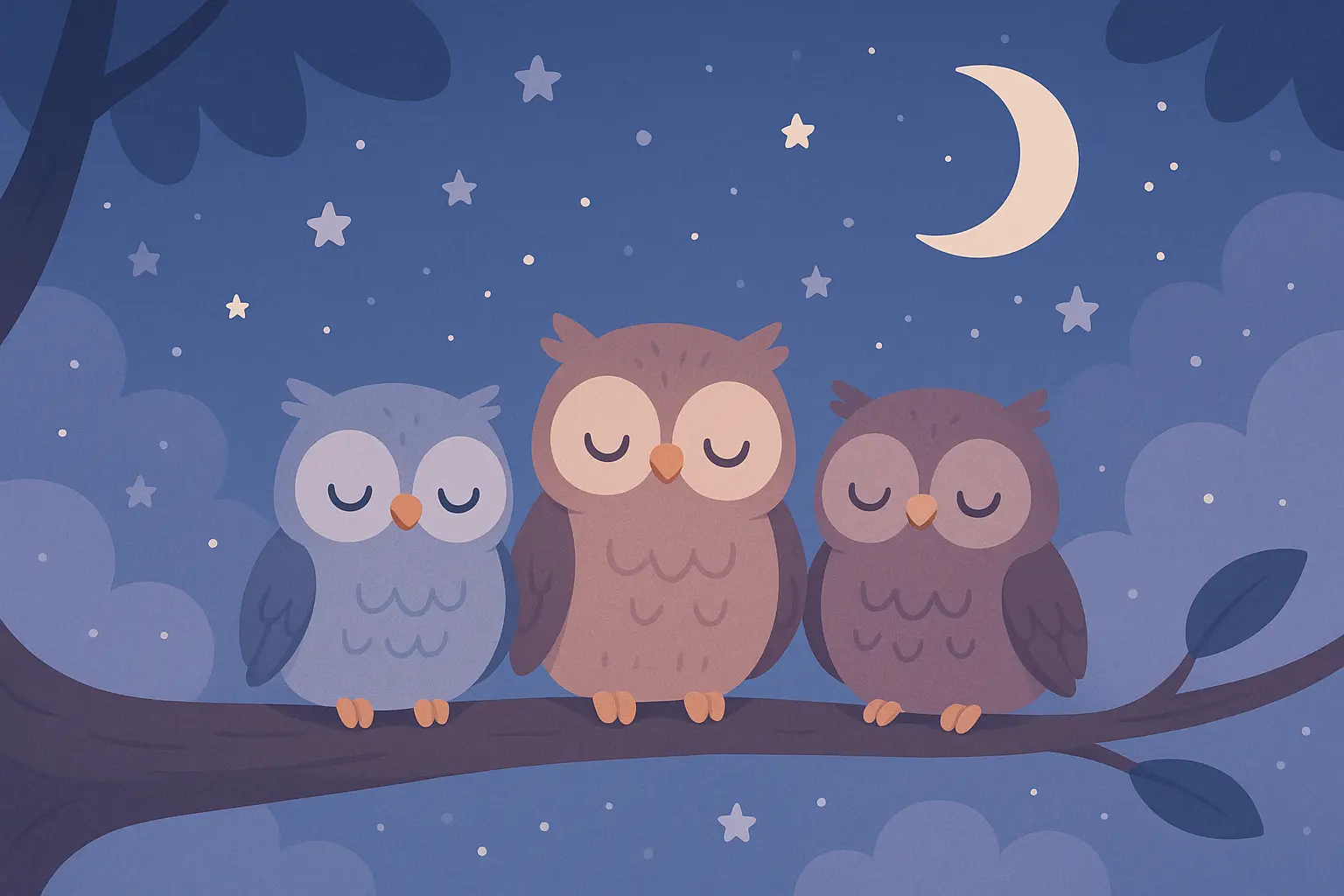
17. Owl Babies by Martin Waddell
Three young owls wait anxiously for their mother’s return, addressing one of childhood’s most common fears – temporary separation from parents. The story validates kids’ worries while providing reassurance about parental reliability and love.
The mother owl’s return and the babies’ relief create a satisfying ending that helps children understand that parents always come back, making this story particularly valuable for addressing bedtime separation anxiety.
18. The Polar Express by Chris Van Allsburg
This magical Christmas journey celebrates the power of belief and wonder while maintaining themes of home and family. The train’s journey to the North Pole and back creates adventure within a framework of safety and return.
The story’s emphasis on belief, magic, and the warmth of home traditions makes it particularly special for holiday bedtime reading, though its length may be better suited for older children.
Stories That Sneak in Learning
These four educational tales seamlessly blend learning opportunities with bedtime-appropriate pacing and themes. Each story teaches important concepts – from alphabet recognition to cause-and-effect relationships – while maintaining the gentle, reassuring tone necessary for successful bedtime routines and peaceful sleep preparation.
19. Chicka Chicka Boom Boom by Bill Martin Jr.
This alphabet adventure makes learning letters fun through infectious rhythm and repetition. The letters’ climb up the coconut tree and tumble creates gentle excitement that resolves into peaceful order.
The repetitive “chicka chicka boom boom” refrain creates a musical quality that kids find both engaging and soothing, while the alphabet learning happens naturally through the story’s progression.
20. The Giving Tree by Shel Silverstein
Fair warning about this one – some parents find it depressing. The tree literally gives everything to this kid who keeps taking. But other parents love how it shows unconditional love. Know your own feelings about it before you read it, because kids pick up on your vibe.
The tree’s consistent presence and giving nature mirrors parental devotion that continues even when children sleep, providing deep emotional security and comfort.
21. Harold and the Purple Crayon by Crockett Johnson
Harold’s creative adventure demonstrates the power of imagination as he draws his own story, ultimately creating his way back to his bedroom window and his own bed. This story about storytelling has particular relevance for bedtime.
The story suggests that imaginative adventures can safely lead back to rest, making it perfect for children who have active imaginations that sometimes interfere with sleep.
22. If You Give a Mouse a Cookie by Laura Numeroff
This circular story teaches cause-and-effect relationships through the humorous chain of events that follows giving a mouse a cookie. The predictable pattern provides comfort while developing logical thinking skills.
The story’s gentle humor and the mouse’s satisfied conclusion create a peaceful resolution, while the circular structure reinforces the comfort of predictability and routine.
Original Tales Made for Sleep
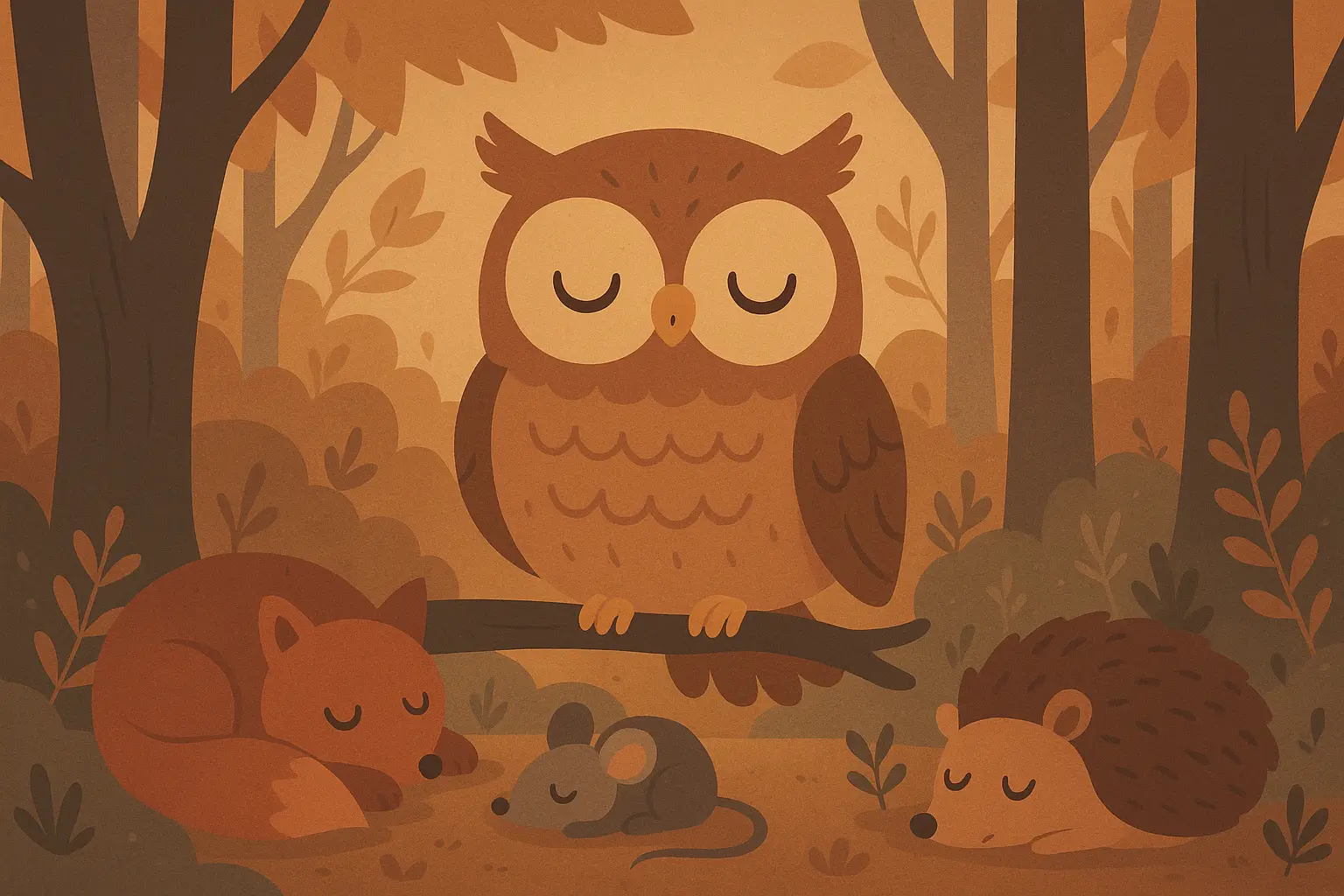
These three original tales are specifically crafted to address bedtime themes directly, featuring characters who learn about sleep, rest, and the natural rhythms of day and night. Each story provides gentle lessons about the importance of sleep while creating magical, comforting narratives that help children embrace their own bedtime routines.
23. The Sleepy Little Owl
Little Hoot was the only owl in the forest who didn’t want to stay awake at night. While his family hunted and played under moonlight, Hoot yawned and wished he could sleep during nighttime hours.
He visited Rabbit, who taught him about cozy burrows; Squirrel, who showed him peaceful nests; and Bear, who demonstrated the comfort of caves. Finally, Hoot realized that sleep comes in many forms – some creatures sleep at night, others during the day, but everyone needs rest to grow strong and wise.
Hoot learned to find his own perfect sleep time, just as children must find theirs, understanding that rest is essential for all living things.
24. The Star That Couldn’t Sleep
High above the earth, little Stella was the brightest star in the sky, but she never wanted to fade at dawn. She wanted to shine continuously, both day and night, never taking a break from her brilliant display.
The Sun gently explained that even stars need rest to keep their light bright and beautiful. The Moon showed her how darkness helps others appreciate light even more. Finally, Stella learned that by resting during the day, she could shine even more brilliantly at night, bringing wonder to children looking up at the sky.
Now she happily fades each morning, knowing her rest makes her light more special and her nighttime presence more meaningful for those who need her gentle glow.
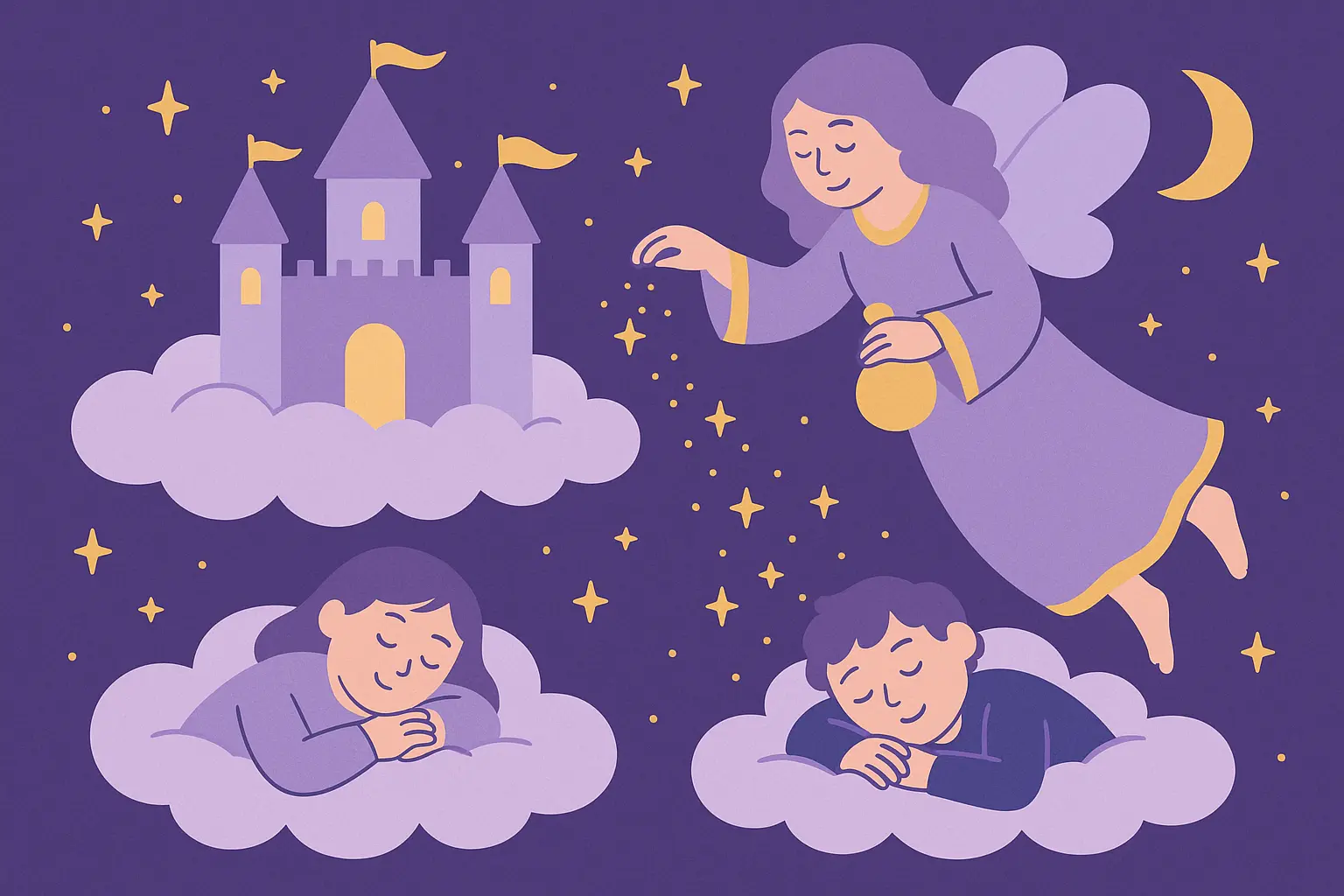
25. The Dream Keeper’s Gift
In a castle made of clouds lived the Dream Keeper, whose job was to collect wonderful dreams and keep them safe for children around the world. Each night, she would sprinkle dream dust from her silver pouch, ensuring every child had beautiful adventures while they slept.
One night, she met a little boy who was afraid to sleep because he might have scary dreams. The Dream Keeper showed him her treasure room full of dreams about flying, magical animals, and exciting adventures that always ended safely.
She gave him a special dream catcher and promised that she would always guard his sleep, keeping only the most wonderful dreams for his nighttime journeys into the land of sleep.
Why These Stories Actually Work: The Real Science
This detailed breakdown examines what makes each story category effective for bedtime routines, exploring the specific elements that promote sleep readiness. We break down the psychological and developmental reasons why certain narrative structures, themes, and pacing choices successfully transition children from daytime energy to nighttime calm.
Understanding the psychological principles behind effective story themes helps explain why certain bedtime narratives consistently succeed in promoting sleep.
|
Story Element |
How It Helps Sleep |
Example Stories |
Why It Actually Works |
|---|---|---|---|
|
Repetitive Structure |
Creates predictability and calm |
“Goodnight Moon”, “Brown Bear” |
Reduces anxiety through familiarity |
|
Gradual Energy Decrease |
Mirrors natural sleep transition |
“Goodnight Moon”, “Harold’s Purple Crayon” |
Physically prepares for rest |
|
Reassuring Endings |
Builds security and comfort |
“Corduroy”, “The Kissing Hand” |
Addresses bedtime fears directly |
|
Gentle Problem-Solving |
Teaches without overstimulation |
“The Little Engine”, “Three Little Pigs” |
Provides closure and satisfaction |
Why the Old-School Classics Still Work
“Goodnight Moon” is the perfect example of bedtime pacing through its gradually darkening pictures and increasingly quiet tone. The repetitive “goodnight” structure creates a meditative quality that naturally slows kids’ energy while teaching the ritual of settling down.
“The Very Hungry Caterpillar” combines educational content with a deeply satisfying transformation story. The caterpillar’s journey from hunger to fulfillment mirrors kids’ own growth experiences, while the circular story structure provides the comfort of completion and renewal.
“Where the Wild Things Are” lets children safely explore big emotions through Max’s adventure. The story validates feelings of anger and frustration while ultimately reinforcing that home represents love and acceptance – crucial emotional foundations for bedtime security.
Modern Stories That Get Contemporary Concerns
“The Kissing Hand” directly tackles bedtime separation anxiety with its central concept of carrying parental love. The story gives children a concrete, physical strategy for feeling connected to parents during sleep, transforming abstract love into something tangible.
“Llama Llama Red Pajama” validates common bedtime fears while demonstrating parental responsiveness and reliability. The rhyming text creates a soothing rhythm while the story builds trust in bedtime routines and parental availability.
The emotional resonance of these modern stories lies in their direct acknowledgment of children’s real fears and concerns, providing both validation and practical comfort strategies.
Adventure Stories That End Right
“The Little Engine That Could” teaches resilience and positive self-talk while ending with the peaceful satisfaction of achievement. The repetitive “I think I can” becomes a calming mantra that children can use when facing their own challenges, including the challenge of falling asleep.
“Corduroy” addresses fundamental themes of belonging and acceptance that become particularly relevant at bedtime when children may feel vulnerable or alone. The story’s resolution – being chosen and loved – provides deep emotional security.
These adventure stories work because they acknowledge children’s need for excitement and challenge while ensuring that resolution comes through comfort, safety, and belonging rather than continued stimulation.
Educational Stories That Don’t Overwhelm
“Chicka Chicka Boom Boom” features a rhythmic, musical quality that creates a hypnotic effect perfect for bedtime. The alphabet learning happens naturally through the story’s progression, while the chaos of letters falling resolves into peaceful order, mirroring the transition from day to night.
“Harold and the Purple Crayon” presents a story about storytelling itself, suggesting that creative adventures can safely lead back to rest. This concept is particularly valuable for children whose active imaginations sometimes interfere with sleep.
The educational value in these bedtime stories never overwhelms their primary function as bedtime soothers, instead weaving learning seamlessly into narratives designed to promote calm and security.
How These Stories Meet What Kids Actually Need at Bedtime
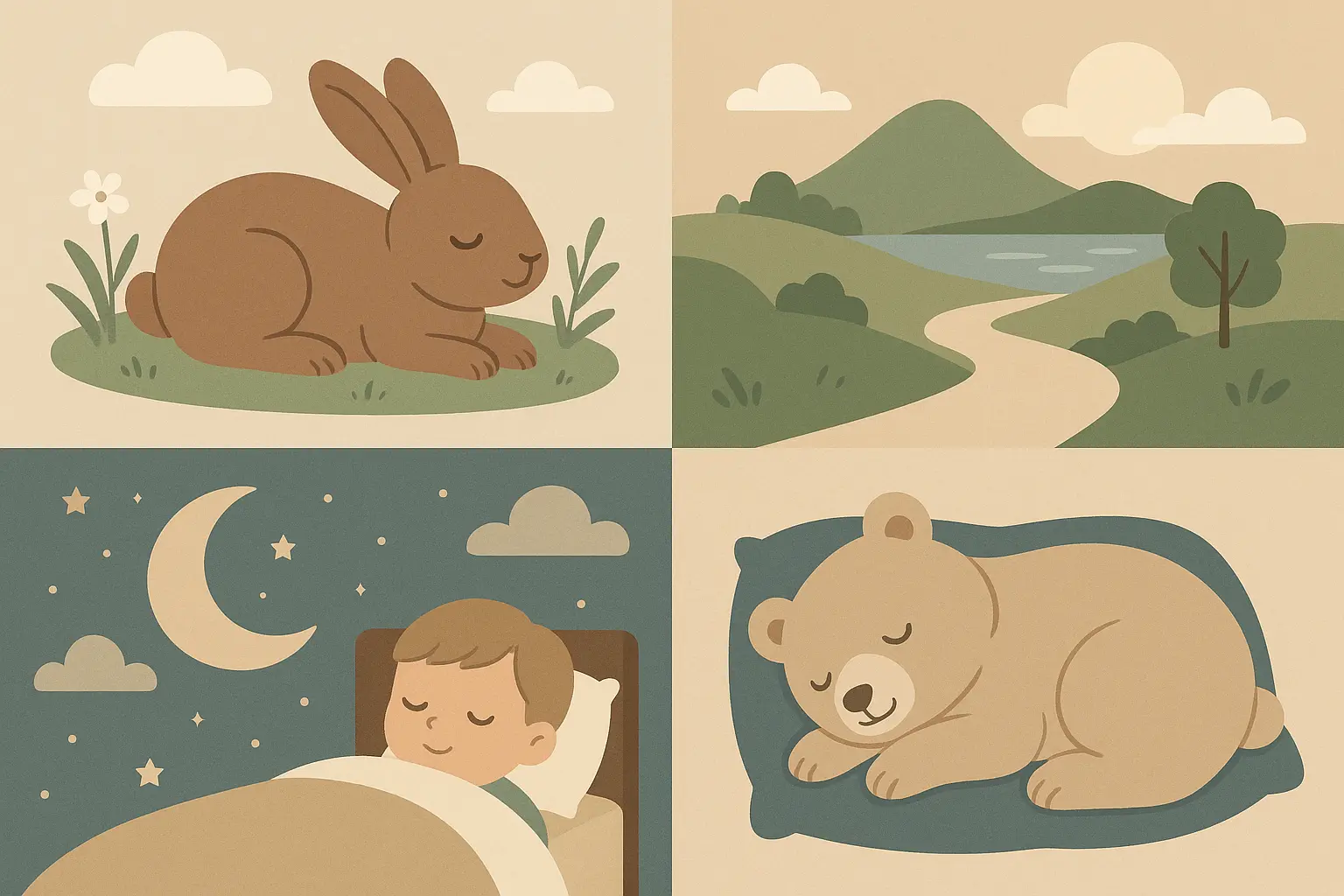
This comprehensive evaluation examines how each story category fulfills the essential criteria for effective bedtime reading. We analyze age appropriateness, story length, emotional tone, sleep readiness promotion, repetition value, and interactive potential to help parents make informed choices based on their children’s specific needs and developmental stages.
Getting the Age Thing Right Across Categories
Ages 2-4 Best Bets: Stories like “Brown Bear, Brown Bear” and “Goodnight Moon” work great with simple words, repetitive structures, and clear pictures that match toddlers’ needs. These stories provide predictability and comfort without overwhelming young attention spans.
Ages 5-8 Better Options: More complex stories including “Where the Wild Things Are” and “The Polar Express” offer richer vocabulary and deeper themes while maintaining appropriate emotional content. These stories challenge developing minds without creating bedtime anxiety.
Works for Everyone: “The Very Hungry Caterpillar” and “Corduroy” work across age ranges because they operate on multiple levels – simple enough for toddlers to follow, rich enough for older children to appreciate deeper themes.
The Rodriguez family discovered that their 6-year-old daughter Sofia had outgrown “Goodnight Moon” but wasn’t ready for chapter books. They found success with “Where the Wild Things Are,” which provided enough complexity to hold her interest while maintaining the gentle resolution she needed for peaceful sleep. The story’s emotional depth allowed for meaningful bedtime conversations about feelings and imagination, strengthening their bedtime bond while promoting better sleep.
Story Length and Pacing That Actually Works
Short Format Winners (5-8 minutes): “Brown Bear, Brown Bear” and “Goodnight Moon” provide complete, satisfying stories in brief formats perfect for younger children or when time is limited. These stories pack maximum calming impact into minimal time investment.
Medium Length Success (8-12 minutes): Stories including “The Kissing Hand” and “Corduroy” offer more developed plots and character growth while remaining manageable for standard bedtime routines. They provide enough depth for meaningful discussion without extending beyond optimal attention spans.
Extended Format Benefits (12-15 minutes): “The Polar Express” and “Where the Wild Things Are” work well for older children who can sustain attention for longer periods and may need more substantial content to feel satisfied before sleep.
Emotional Tone Analysis for Sleep Prep
Highly Calming Champions: “Goodnight Moon” and “The Runaway Bunny” create deeply peaceful atmospheres through gentle language, reassuring themes, and gradually decreasing energy levels that naturally lead toward sleep.
Mildly Exciting but Resolving Well: “
Mildly Exciting but Resolving Well: “Harold and the Purple Crayon” and “The Little Engine That Could” include mild adventure and problem-solving but resolve into comfort and satisfaction rather than continued excitement.
Emotionally Reassuring Powerhouses: “The Kissing Hand” and “Owl Babies” directly address common childhood fears while providing specific comfort strategies and reassurance about parental love and reliability.
|
Common Bedtime Challenge |
Stories That Actually Help |
Key Benefits |
How to Make It Work |
|---|---|---|---|
|
Separation Anxiety |
“The Kissing Hand”, “Owl Babies” |
Gives concrete comfort strategies |
Create physical rituals inspired by stories |
|
Fear of the Dark |
“Goodnight Moon”, “The Night You Were Born” |
Makes nighttime feel peaceful |
Use dim lighting while reading |
|
Can’t Settle Down |
“Brown Bear”, “Chicka Chicka Boom Boom” |
Repetitive structure promotes calm |
Encourage quiet participation |
|
Bedtime Resistance |
“Llama Llama Red Pajama”, “Where the Wild Things Are” |
Validates emotions while promoting cooperation |
Talk about story themes and feelings |
Sleep Readiness Promotion Strategies
Explicit Sleep Modeling: “Goodnight Moon” explicitly models bedtime routines and the process of settling down for sleep, making it invaluable for establishing and reinforcing healthy bedtime habits.
Anxiety Reduction Focus: “Llama Llama Red Pajama” and “The Kissing Hand” specifically address bedtime fears and separation anxiety, providing children with tools and reassurance for managing nighttime worries.
Security and Comfort Building: “The Runaway Bunny” and “Corduroy” build fundamental feelings of safety, love, and belonging that create the emotional foundation necessary for peaceful sleep.
Repetition and Familiarity Benefits
High Repetition Value: Stories with repetitive structures including “Brown Bear, Brown Bear” and “If You Give a Mouse a Cookie” allow children to predict and participate, creating comfort through familiarity while supporting language development.
Moderate Repetition Success: “The Very Hungry Caterpillar” uses recurring elements (days of the week, eating pattern) that provide structure without being overly repetitive, maintaining interest across multiple readings.
Emotional Repetition Comfort: Stories such as “Where the Wild Things Are” and “Corduroy” rely on repeated emotional patterns and satisfying narrative arcs that build comfort through predictable positive outcomes.
Interactive Elements That Keep Things Calm
High Interaction Potential: “Brown Bear, Brown Bear” invites children to predict animals and colors, while “Chicka Chicka Boom Boom” encourages alphabet recitation and gentle sound effects that engage without energizing.
Moderate Interaction Opportunities: “The Very Hungry Caterpillar” allows counting practice and day identification, while “If You Give a Mouse a Cookie” invites prediction of the next request in the chain.
Quiet Engagement Focus: “The Polar Express” and “Where the Wild Things Are” engage through immersive storytelling and rich imagery rather than direct participation, perfect for children who prefer to listen quietly and use their imagination.
Creating Custom Bedtime Stories with AI Technology
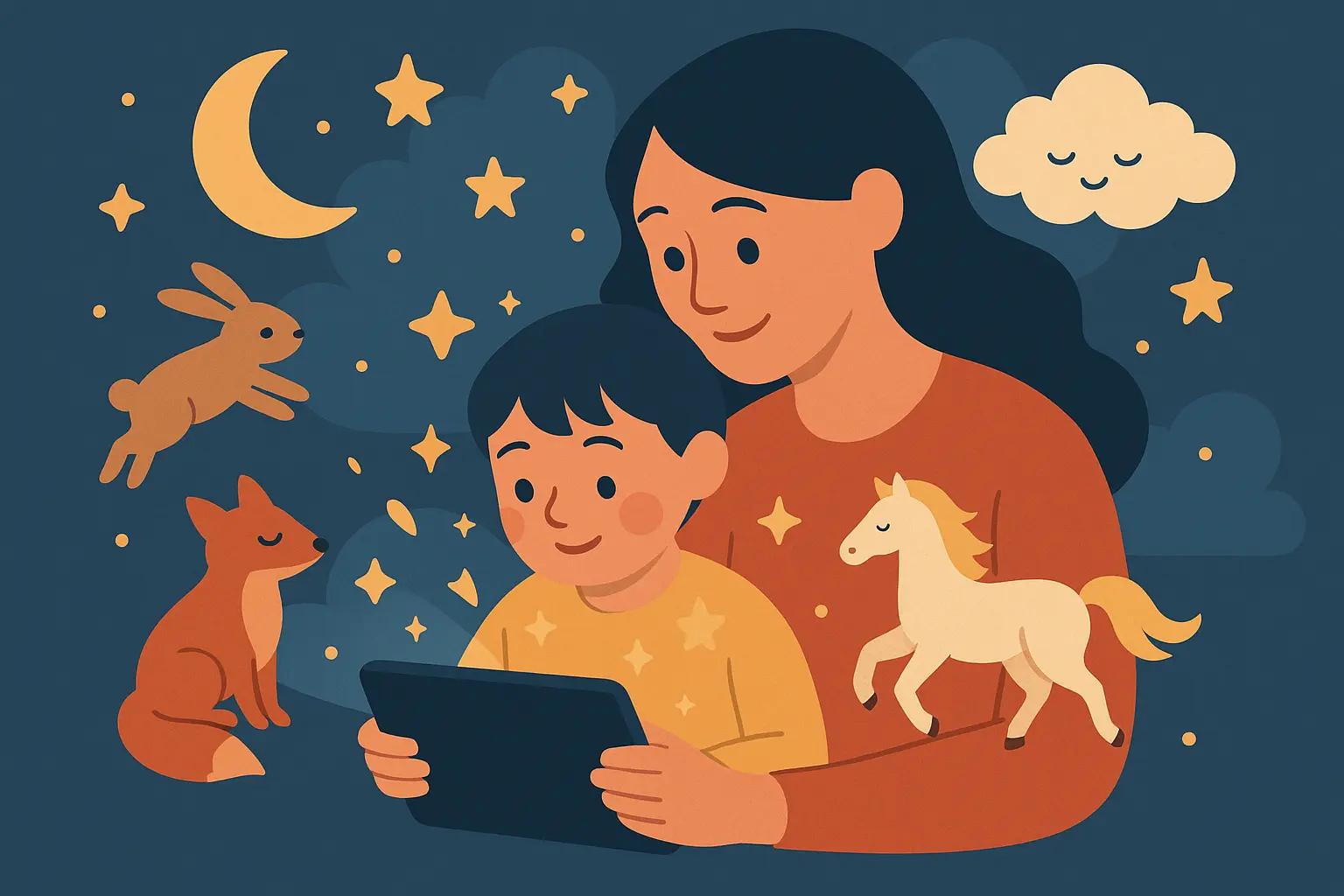
Sometimes you run out of books, or your kid is obsessed with something super specific (like garbage trucks who are also superheroes – yes, that was a real request from my nephew). That’s where AI story generators can be a lifesaver. Think of them as your personal bedtime story writer who never gets tired of creating tales about whatever your kid is currently obsessed with.
While these 25 classic and modern stories provide excellent foundations for bedtime routines, many parents find themselves wanting fresh content that speaks directly to their child’s unique interests and experiences. This is where AI-powered story generation becomes invaluable for modern families.
Parents seeking personalized content can explore AI bedtime story generators that create custom tales while maintaining the sleep-promoting elements of traditional bedtime stories for kids.
Common Bedtime Story Problems Parents Face
Parents often struggle with several recurring issues: kids getting bored with the same stories, trouble finding books that address specific fears or interests, and the challenge of finding stories that match their child’s exact developmental stage and attention span.
Traditional publishing can’t possibly address every child’s specific combination of interests, cultural background, and developmental needs. A child fascinated by dinosaurs and construction vehicles while dealing with anxiety about starting preschool needs very specific content that standard books rarely provide.
What Personalized Story Creation Actually Does
AI story generation tools can create narratives that incorporate your child’s name, favorite animals, current interests, and even specific challenges they’re facing – all while maintaining the gentle, calming tone essential for bedtime success.
For example, if your child loves trains and is worried about an upcoming doctor visit, you could generate a story about a brave little train who helps other trains feel better when they need check-ups, ending with everyone feeling proud and safe.
Building a Story Library That Grows With Your Kid
Rather than replacing beloved classics, AI-generated stories can supplement your existing collection with content that evolves as your child grows. The same character can appear in age-appropriate adventures that become more sophisticated as your child’s comprehension and interests develop.
This approach maintains the comfort of familiar characters while ensuring that bedtime stories never become stale or outgrown, creating a dynamic library that grows with your family.
Making Sure AI Stories Actually Work for Bedtime
The key to successful AI-generated bedtime stories lies in understanding the same principles that make traditional stories effective: appropriate pacing, reassuring themes, gentle conflict resolution, and satisfying endings that promote sleep readiness.
Quality AI tools understand narrative psychology and can create stories that follow proven bedtime story structures while incorporating personalized elements that make each tale feel specially crafted for your child.
For parents interested in creating their own stories, understanding how to write short stories can help them craft effective bedtime narratives that complement AI-generated content.
When you’re ready to explore personalized bedtime storytelling, Nairrate’s AI story generator can help you create custom tales that maintain all the sleep-promoting qualities of classic bedtime stories while addressing your family’s unique needs and interests. The platform understands the delicate balance between engagement and calm that makes bedtime stories successful, ensuring that every generated story ends with the peaceful resolution essential for good sleep.
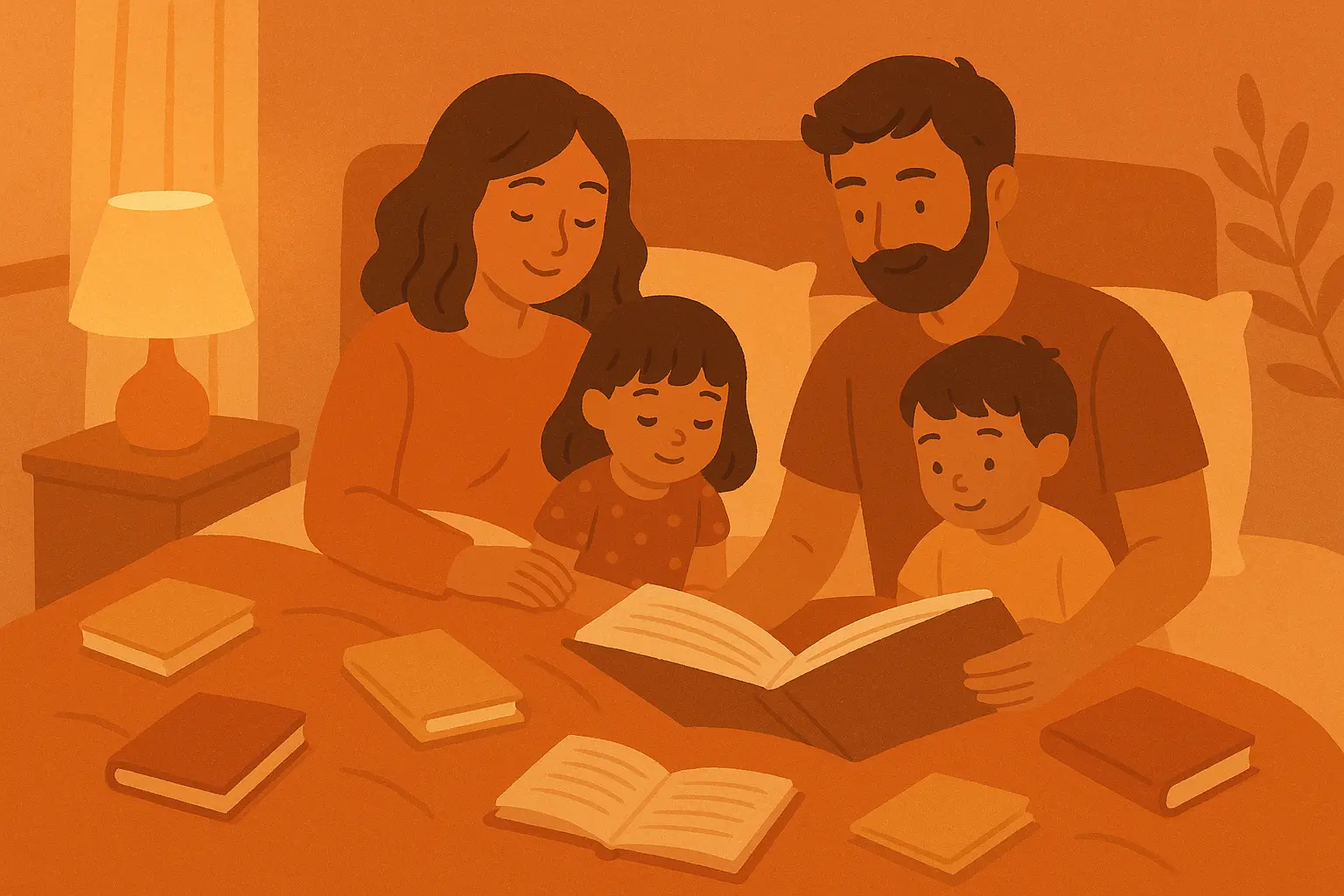
The Real Truth About Bedtime Stories
The perfect bedtime story combines timeless storytelling principles with your family’s unique needs and preferences. Whether you choose classic tales that have soothed generations or create personalized stories using modern AI technology, the goal remains the same: fostering connection, security, and peaceful transitions to sleep that benefit both children and parents.
The 25 stories in this guide represent decades of proven success in helping children transition from daytime energy to nighttime calm. Each has earned its place through countless bedtime routines, providing comfort, security, and gentle learning opportunities that make bedtime something children anticipate rather than resist.
Here’s the truth: the most effective bedtime story isn’t necessarily the most popular or acclaimed – it’s the one that resonates with your specific child at their current developmental stage. Some children need the repetitive comfort of “Goodnight Moon” night after night, while others crave variety and new adventures within familiar, calming frameworks.
The research showing that nearly half of young children read bedtime stories reflects parents’ intuitive understanding of these stories’ power. Beyond the immediate benefit of easier bedtimes, these shared reading experiences build vocabulary, strengthen emotional bonds, and create positive associations with books and learning that last a lifetime.
Parents looking to expand their storytelling repertoire can explore additional short story examples to understand what makes narratives truly engaging for young audiences.
Let’s be real – some nights, even the perfect story won’t work. Your kid might be overtired, or going through a phase, or just having an off night. That’s totally normal. The goal isn’t to have magical bedtime success every single night – it’s to create a routine that usually works and helps everyone feel more connected at the end of the day.
If you only buy three books from this list, make them “Goodnight Moon,” “The Kissing Hand,” and “Brown Bear, Brown Bear.” These three cover almost every bedtime situation you’ll face – the kid who won’t settle down, the kid who’s anxious about being alone, and the toddler who just wants to participate in the story.
Whether you stick with time-tested classics or venture into personalized storytelling through AI generation, the key is consistency, patience, and attention to what works best for your unique child. The best bedtime story isn’t the one that works for everyone else’s kid – it’s the one that works for yours. Maybe your child needs the same book every single night for six months. Maybe they want a different adventure each time. Maybe they fall asleep to your made-up stories about their pet hamster saving the world. Trust your instincts, keep it gentle, and remember that this phase of tucking them in and reading together won’t last forever – even though some nights it feels like it will.



Add comment